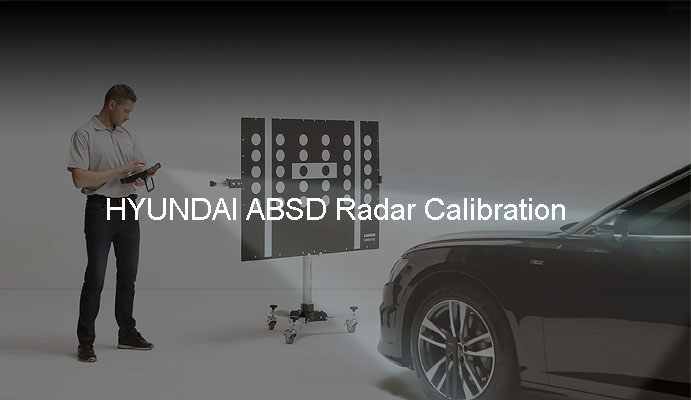What does TPMS mean?
Tire pressure monitoring system is also called "TPMS". By recording the tire speed or the electronic sensor installed in the tire, it can automatically monitor the various conditions of the tire in real-time. The monitored data includes pressure, tire temperature, battery status, etc. This technology can provide safe and effective guarantees for vehicle driving.
Types of TPMS
Tire pressure monitoring systems can be divided into two types: indirect tire pressure monitoring systems and direct tire pressure monitoring systems.
Direct TPMS: Tire air pressure and temperature are measured by pressure sensors installed inside each tire. Then, the sensors transmit the data to the vehicle's on-board computer via a wireless transmitter. When the tire has high pressure, low pressure or high temperature, the system will send a warning to the owner. And the range of the tire pressure warning value and the temperature warning value can be set by the car owner according to the vehicle model, car habits, and geographical location. Direct TPMS provides accurate and real-time tire pressure data. making it a more reliable system.
Indirect TPMS: Tire pressure is calculated indirectly via wheel speed sensors and other data from the vehicle's anti-lock braking system (ABS). Indirect TPMS does not require pressure sensors in each tire, and while this makes it a more affordable system, it does not provide as accurate data as direct TPMS and may not be able to detect gradual tire pressure loss.
How indirect TPMS and direct TPMS work?
Indirect tire pressure monitoring system
When tire pressure is reduced, the weight of the vehicle makes the tire smaller in diameter, causing it to spin faster than other tires. Wheel speed sensors detect a change in vehicle speed and send a signal to the vehicle's Electronic Control Module (ECM). The ECM then determines which tire is low on pressure by comparing the wheel speed signals. If one tire is spinning faster than the others, it assumes that tire is low on pressure and sends a warning signal to alert the driver.
Direct Tire Pressure Monitoring System
The direct tire pressure monitoring system monitors the tire pressure through the pressure sensor installed in each tire and sends the data to the central control module. The central control module compares the acquired tire pressure data with the tire pressure set by the vehicle. If tire pressure is too high or too low, the system alerts the driver via a warning light on the dashboard or a message on the vehicle's display. The direct TPMS system provides real-time tire pressure monitoring data, allowing drivers to take corrective measures before tire damage occurs.
Tire pressure monitoring system: advantages and disadvantages
As a technology for monitoring tire pressure, the tire pressure monitoring system has the following advantages and disadvantages:
Advantages
① Extended Tire Life: Uneven tire wear has a lot to do with over- or under-inflation of the tires. A TPMS helps determine if a tire is properly inflated, which helps extend the life of the tire without causing it to fail prematurely and result in costly repairs.
② Improved Fuel Efficiency: When tires are inflated to the correct pressure, fuel efficiency is improved. Because underinflated tires lead to increased rolling resistance and lower fuel economy.
③ Reduced Environmental Impact: Properly inflated tires help reduce the amount of fuel used by the vehicle, which helps reduce the amount of greenhouse gas emissions the vehicle produces.
④ Improved overall safety: By monitoring tire pressure, drivers can be alerted to potential tire problems and corrective action can be taken before a tire blowout or other dangerous situation occurs. This helps improve road safety.
Disadvantages
① Expensive: TPMS can be expensive to install. Additionally, TPMS requires regular maintenance to keep it functioning properly, which may include replacing batteries, sensors or other components.
② Error reminder: TPMS systems provide false alarms when sensors are damaged or malfunctioning. This can lead to driver frustration and the risk of ignoring genuine warnings.
③ Limited range: TPMS sensors have a limited range, which means they may not be able to monitor tire pressure on vehicles that are towing a trailer or traveling long distances.
The
TPMS (Tire Pressure Monitoring System) Scan Tool is a diagnostic device for reading and diagnosing faults in a vehicle's tire pressure monitoring system. It can be used to check tire pressure sensors, monitor tire pressure, and reset the TPMS warning light on the instrument cluster. There are various types of TPMS (Tire Pressure Monitoring System) scanning tools. With the advancement of technology, scanning tools have changed from complex and bulky to small and simple handheld devices. It is in this environment that iSmartTool 601Max was officially born!
iSmartTool 601Max TPMS scanning tool has the following functions:
①Activate TPMS Sensor
Users can activate TPMS sensors and check sensor data including tire pressure, sensor ID, tire frequency, tire temperature and battery condition.
②Program TPMS Sensor
Users can program sensor data to specific sensors and replace faulty sensors that have low battery life or are not functioning properly. The programming methods are automatic creation, manual creation and copy by activation.
③TPMS Learning
Newly programmed sensor IDs can be written to the vehicle's ECU for sensor identification. But the Relearn operation is only applicable when the original sensor IDs are stored in the vehicle ECU and the newly programmed sensor ID is different. Relearn methods are: static learning, self-learning and OBD Relearn.
④TPMS Diagnosis
User implements writing sensor IDs into vehicle and reading ID from vehicle, read/clear TPMS code, read TPMS real-time data, etc.
These features of iSmartTool 601Max allow you to monitor tire pressure easily and quickly. And it is suitable for more than 98% of the vehicles in the world.
Overall, TPMS scanning tools can help you improve the safety, performance and longevity of your vehicle, while also saving you time and money in the long run. Come and get iSmartTool 601Max now!





